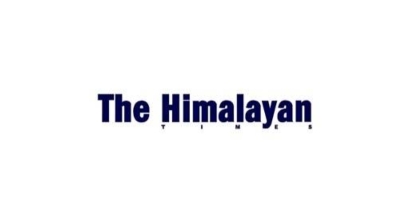Nepal as leader of LDCs Challenge to resist rich country hypocrisy
With much pride, Nepal has, since the end of the last year, assumed the role of leading the least developed countries - labeled as the Group of LDCs. That obliges Nepal to raise the issues that mattered to the world’s poorest countries at the global forums, dealing explicitly with trade, aid or debt. In the international arena, these three themes appear to be the three pronged approach to effectively combat the poverty trap in the LDCs, because the world’s wealthy nations boast their generosity for this.
Presumably, the rich countries offer trade preferences to LDC exports under different schemes. So that LDC products, excluding some, get access to the rich country markets without paying any tariffs. Consequently, the world’s most affluent markets, notably the US and the EU, remain the most important markets for LDCs as they absorb almost one-fourth of the LDC exports in totality.
The rich country kindness is also reflected in their aid and debt relief to the poorest countries. Aid to the LDCs has been increasing since 2000: growing faster than the rich country aid flow to other developing countries. The G8 countries have agreed to double the aid to poor countries, totaling $50 billion a year, with at least half of that going to Africa, by 2010.
Moreover, the participants of the Programme of Action for the LDCs
for 2001-2010 have targeted 0.2 per cent of their gross national income (GNI) as aid to the LDCs. In a similar vein, the rich countries have been easing debt burden of the poor countries under the Heavily Indebted Poor Countries (HIPC) Initiative, and thirty out of the forty countries eligible for this privilege have been LDCs. These initiatives, thus, reveal significance of the rich country aid and debt relief package for domestic investment in economic and social goals in the LDCs, ultimately alleviating poverty in these countries.
If one delve into the rich nation sympathy to the poorest nations it’s like the devil in the details. Despite the significant reduction in trade protectionism globally, the LDC exports still face high barriers to trade. It is hard to believe that LDCs are biased against the products in which they have - or potential to have — comparative advantage due to the policy choices of the wealthy nations, regarding the market access or support to their producers. Studies reveal that over half of the LDC exports face some type of border protection in the world’s wealthiest nations. Those products in which LDCs have distinct comparative advantage are affected the most.
The reality is equally shocking in case of the rich country preferential schemes. They discriminate in treatment among beneficiaries and they lack comprehensive product coverage for the tariff preference. Despite such privileges,
the arduous rules of origin requirements and implementation procedures have not allowed LDCs to gain effective and secure market access in the rich country markets. To make the
situation more difficult, the non-tariff barriers — such as complicated product standard and sanitary rules, and contingency measures — in the rich countries are no less responsible.
The value of preference is also diminishing as the preference margins for the LDC exports are rapidly eroding with a tendency of lowering tariff rates, unilaterally and multilaterally. So in many instances, traders in the LDCs rather pay the tariffs and forego the privileges, minimizing the rate of preference utilization.
These circumstances divulge why LDCs are marginalized in the global trade in spite of the market access facility they get in the rich country markets. Still the LDCs as a group share less than one per cent of the world export, although their average level of trade integration is at par with the world average.
Thus, it contradicts with the conventional wisdom that the persistent poverty in the LDCs is the result of their low level of trade integration and trade liberalization. The fact is that the LDC concerns are grossly ignored, either due to lack of their knack to negotiate and represent themselves in the international forums, or they are incapable of understanding the rich country hypocrisy.
Nepal as the leader of the LDCs, hence, bears a responsibility of raising the issues dealing with the three-pronged approach to poverty reduction and should take a stance against the rich country hypocrisy. The success of Nepal’s leadership would largely depend on how it takes up the matters to materialize the international initiative that forces all rich countries to grant preferences to all LDCs without any loophole. Although priority has
been given to aid and debt relief to improve the financial plight of the LDCs, the official development assistance has actually remained unchanged or declined in real terms for a majority of the poorest countries over the past years.
Neither the initially targeted 0.7 per cent of the rich country national income as aid commitment has been achieved, nor have their debt relief package benefited all the LDCs. Progress has to be made on these crucial issues.
bijshakya@hotmail.com





